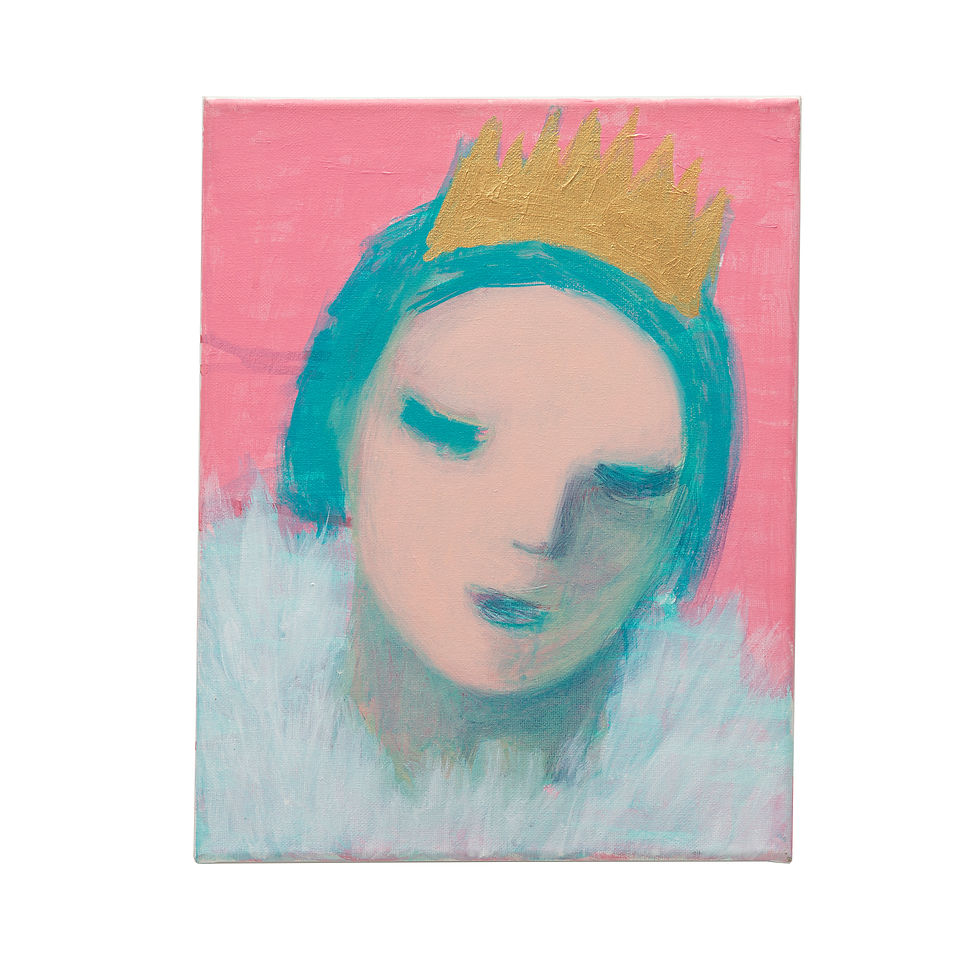
Introduction
The painter was at home, and she sounded up, sunny and quick to reveal her origins from Cambridge, Massachusetts, joking with true New England sarcasm. It was a Friday morning in New York City, where Ayse Wilson has called home for the better part of her professional life. While dreading the wait line at the nearest cell shop, she began to reflect on her career as an artist with a presence in Istanbul since 2007, with her first solo show “Swimmers”, at Pg Art Gallery’s former location in Bebek.
“I’m half Turkish, but I’m really American. I grew up in Boston. We used to visit Istanbul a lot when I was growing up, but it was always for family. The creative, professional connection was personal,” said Wilson. “Pg was at a stage where they were looking for new artists, having already taken over an established gallery. They wanted to go in a more contemporary direction.”
After seeing one of her works, Pg asked Wilson to collaborate on a project and she replied, “Absolutely.” The artist was also at a transition point in her life. She had then recently finished her graduate studies and was working for Jeff Koons, an opportunity that she describes as flaccid. “You know, it’s nothing you want to do forever, even though it’s a great experience,” she said.
Noting the trend of galleries that have begun to quit art fairs outright due to the exorbitant amounts of money involved, Wilson is unafraid to sharpen her critique on the nature of the international art business. Dealers simply lose interest after spending hundreds of thousands of dollars to sell a painting, as there are increasingly diverse ways to promote names and works in the current landscape.
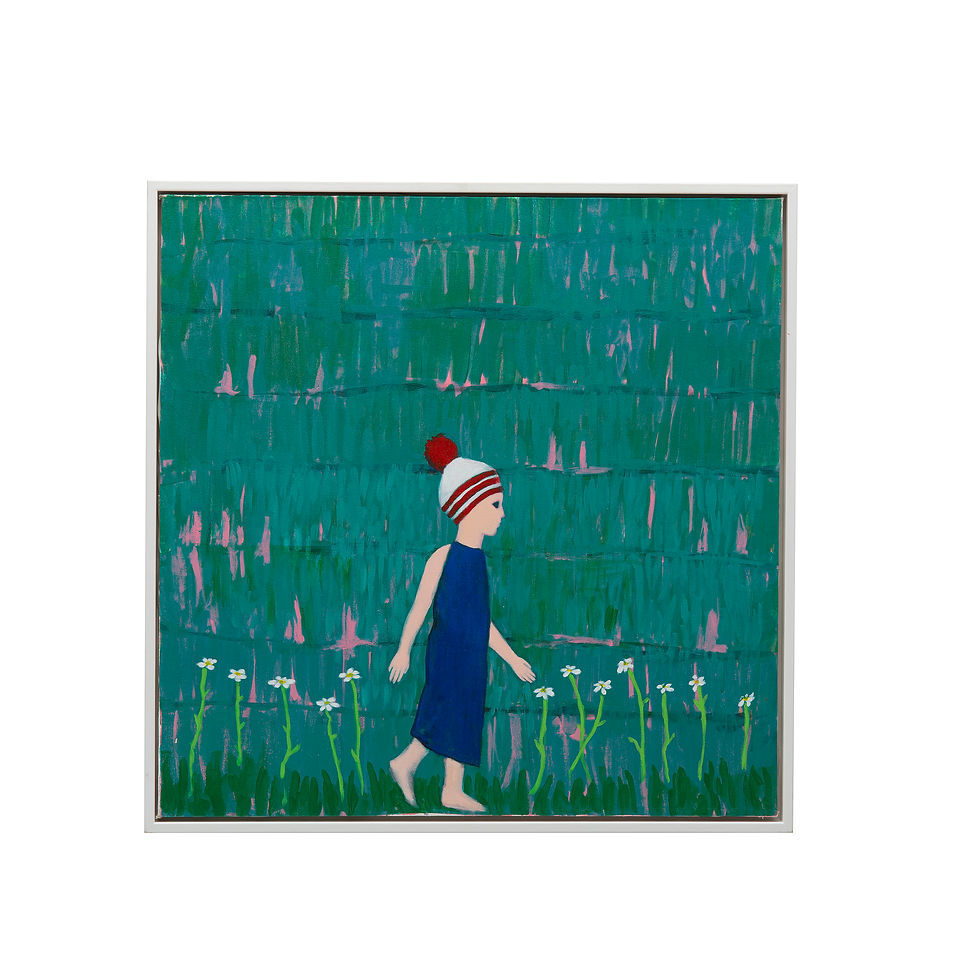
“Pg understands the artist’s process. A lot of times, gallerists can be bossy, or interested in pleasing. Pg doesn’t care, and it’s working. 25 plus years is a lot for a contemporary art gallery anywhere, especially to be a real gallery that’s trying not only to keep up with the scene, but to contribute, and understand that it’s not a finite point in time. This is an exploration of visual ideas and concepts,” said Wilson.
“Galleries are expensive to run. So many start with such great intentions and then people realize the actual costs, and the pressure on selling. And then to be able to do it for 25 years in New York City, for example, to do it for 10 years, 5 years even is a huge success. Sometimes people close their galleries, not for financial reasons, they just realize that the pace of work isn’t what they were up for or they have families or they just can’t, or rent goes way up.”
“What’s always been exciting to me about Pg is that it was my first real gallery, and my first real person I’m working with. You feel like partners with Pg, not overly commercializing. That’s not meddling. That’s having a real conversation about where you’re going to go,” Wilson said. “I used to think that everything in life is totally spontaneous and then I realized you do have to give thought to things, because that helps you get through it better. I’ve just sort of grown up with Pg as an artist. We know it when we see each other.”
The Shows
“The ‘Swimmers’ series started from a homework project in graduate school and I expanded it. And that’s really the way things work for me as an artist. It starts as a personal answer to a question, a challenge, and then it’s like research. You keep going, and keep going,” said Wilson, remembering her days as a student at the New York Academy of Art in Tribeca. “The artworks are products of this very personal, psychological research. I was so lucky. We did this show, and it was a wonderful show for me and for her.”
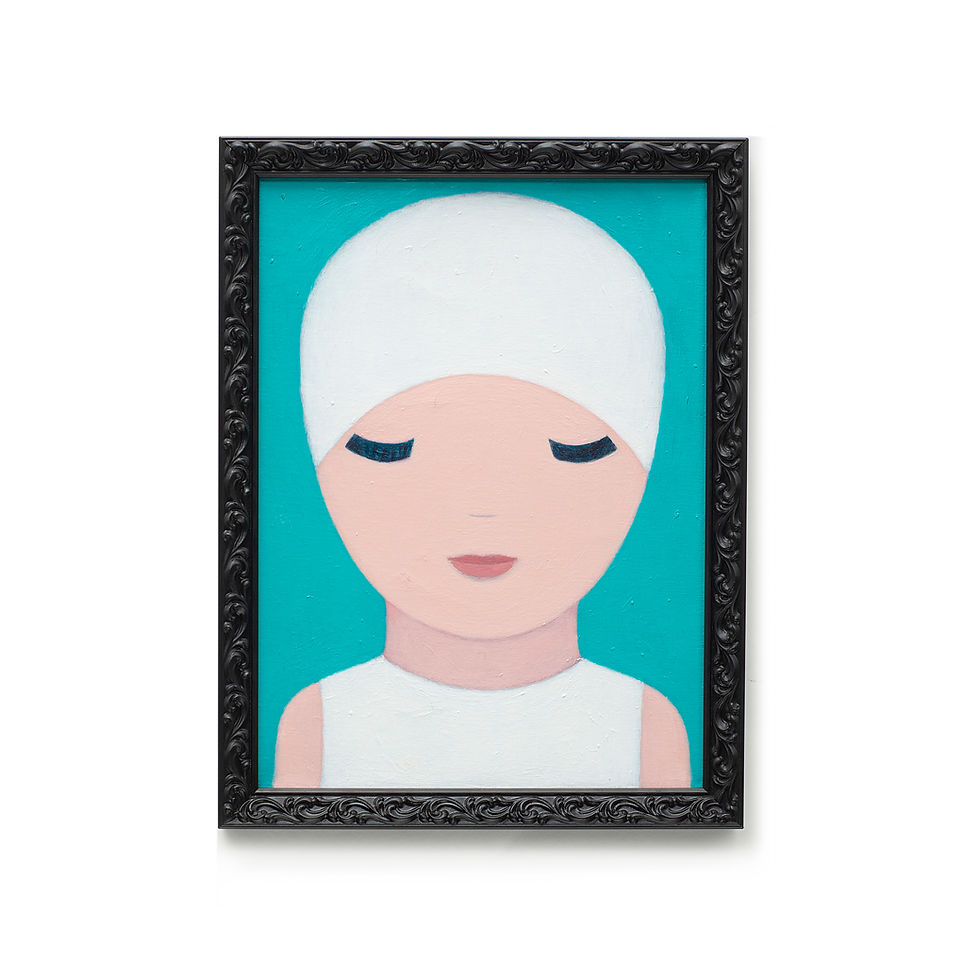
While a relatively small school, the New York Academy of Art attracted Wilson for its central focus on the study of the human figure. It was a place steeped in the theory that if an artist can paint the human figure, they can paint anything. Wilson roundly agrees, even if she admits that artists don’t always want to paint it. Still, in that approach the learning opportunities are boundless. To her, it sparked an enduring, and singular interest in classical training.
“Painting is something that really takes a long time to learn how to do. You have to spend a lot of time with yourself, to figure out how you want to do things. And I’ve always found it very interesting to see how it’s done over the years. That’s why I went to the New York Academy of Art, but I think in the end you learn how to do things by yourself,” said Wilson.
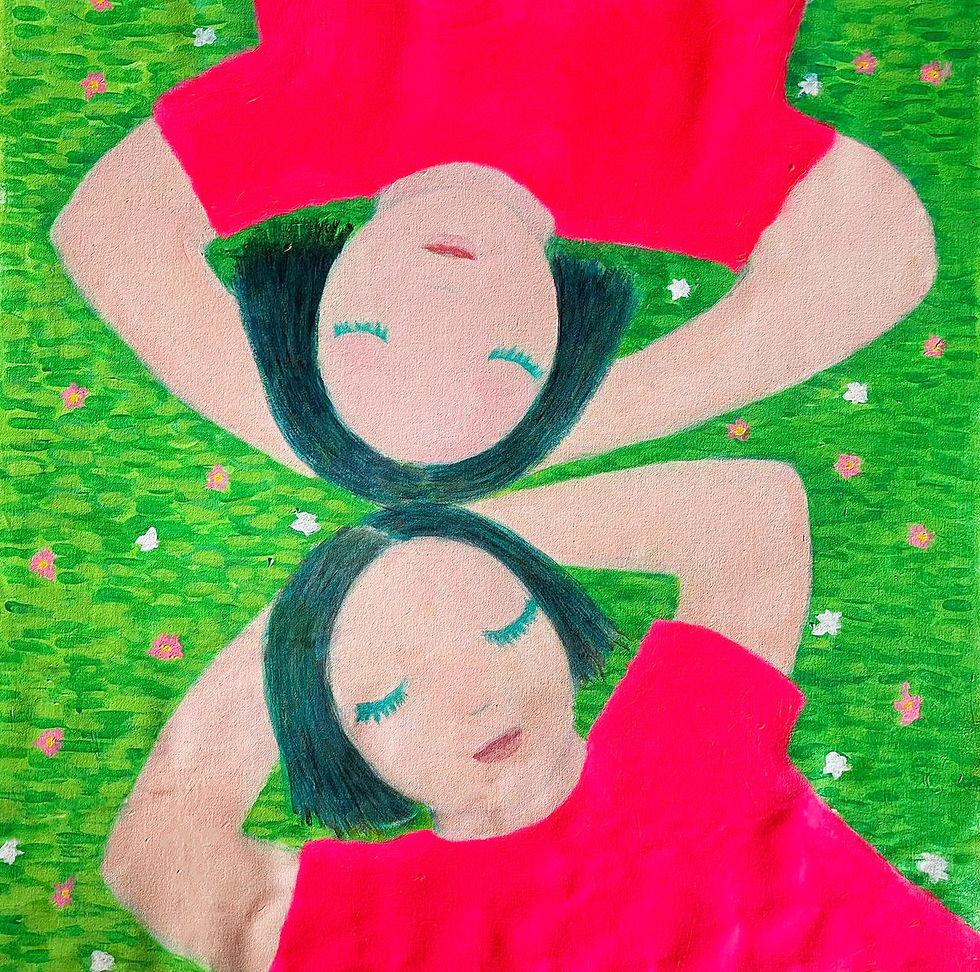
“Swimmers grew out of a very traditional, art school type of assignment, comparing Apollonian ideals to the Dionysian. You know the sort of rational versus the impulsive, and emotional responses, and making two different artworks that contrast those styles. For my Dionysian painting I came up with a voluptuous Swimmer image bursting with the energy of an aqua person.”
“Ten years later, I feel like Pg has blossomed and grown and it’s become really interesting and important, and I’m trying to get there too as an artist. In the meantime, we’ve become good friends. It’s shaped my life,” Wilson said.
“I was prepared, but I feel luckyl. I do know from other experiences that it’s really hard to show your work as an artist when you're not on the same wavelength as the gallery director, or the dealer. You start to see conflict and you don’t understand each other.”
“Unfortunately, the whole money thing comes up, because people need to sell things to keep their businesses, and it becomes awkward for artists because they’re usually not money people. Anyway, that’s how it started. We did one show in Bebek, and she moved her gallery to the second spot, at Bogazkesen. I had two shows there.”

In the years between “Swimmers” and her second solo show at Pg, titled “when we were little” (2012), the gallery had moved to Tophane. By the time she returned to Istanbul for her opening, she had started a family, with two small sons.
“I started to relive my youth through taking care of children, which I never expected I would have all of these going-back-into-time moments of ‘that’s what I was like,’ or ‘that’s what we did,’ or ‘those are the songs we sang’, and those shaped our lives and sometimes we still want to do these things as adults,” she said, contemplating the time of her show “when we were little”, where the experience of raising children emphasized her nostalgia for her childhood memories in Istanbul.
“It was a whole circling back of who you are as a young person and who you are today. There are so many things in common that you realize. I think that’s really life-affirming and healthy and wonderful. It’s hard to be a grownup. It’s hard to be responsible. It’s very boring, and not as spontaneous as we used to be. I felt that I had revisited things that I hadn’t thought about in a very, very long time.”
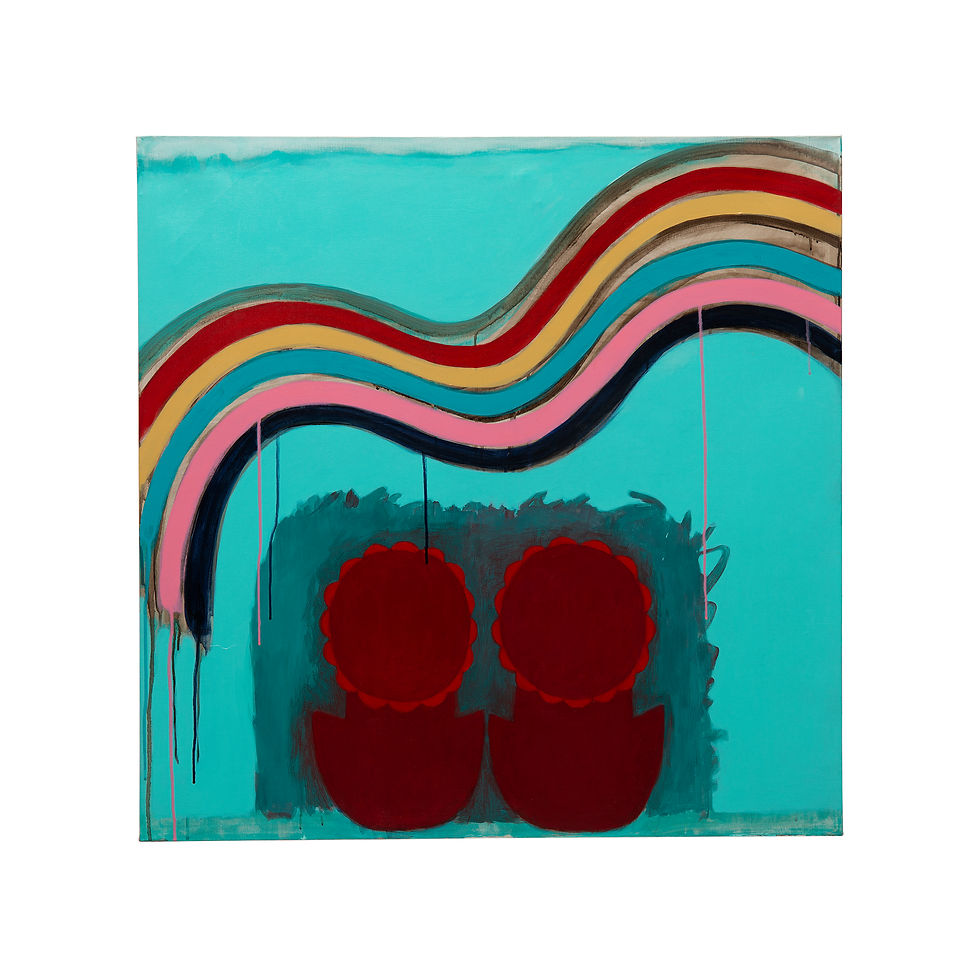
Wilson’s father died when she was very young. He had cancer for about five years, and she remembers feeling death all around her, growing up with the weight of sickness in the house. And what made it worse is that her parents didn’t speak openly about it. They were scared to bring it up to their children, to share sadness. The fact that something tragic was happening hung in the air. Her mother had also suffered from mental illness, on and off. It would fuel the bittersweet intensity of the gaze that she paints, as from pairs of gentle, new eyes seeing the world for the first time, slowly learning that happiness comes with undertones of sadness.
“We had all of these heavy-duty themes growing up, and I think that made us, in some ways grow up very quickly, and in some ways you cling to your youth in a very traumatic way, because you say, ‘Don’t make me deal with these things. Don’t make me think about dying. Don’t make me think about how needy people can be, how needy grownups can be.’ It is such a great thing to be a carefree young child and not worry about stuff,” said Wilson, whose paintings are rich with the inner psychological landscapes of childhood innocence. “There’s always this moment of arrival, where as a child you realize there are sad things out in the world. There are bad people who will hurt you. There are things that can happen that will be very tragic. It’s sad, but it’s true and ironic because it helps you be a better person later on in life.”

When her sons were 8 and 10, she consistently revisited the themes and experiences that are central to growing up, like when a child realizes that they can’t go everywhere by themselves, that some places are dangerous. Human nature is deceptive. Friends are sometimes mean. These hard truths are part of the metaphysical growth that comes with maturation in the world. But interestingly, as her art is a reflection of her own mental and emotional state, she draws visual metaphors that connect the dots between her observations of her children, and the inner child within her.
“All of these realizations make you see how sensitive the world is and can be, but you have to do it, because in the end the good outweighs the bad, we think. You have to be an optimist, not naive, but to try. That’s what art is about for me, to be an optimist and try to connect, because otherwise what’s the point?” said Wilson.
“I don’t like art that’s depressing. I don’t want to talk about death. It’s there coming for us today. I don’t want to talk about politics too much, because, you know, they’re all such assholes.”

Her second Pg exhibition, “when we were little”, in comparison to “Swimmers”, captured more of an individual profile in the childlike human figure that Wilson painted in soft, plush colors, exuding the quality of prepubescent comforts. A character appears to emerge, lightly, as from the plural repetition of personified cherubs of youth. As she explained, “When you grow as an artist, a lot of the memory and nostalgia of these images connect people to their own experiences of youth, because we all have it, which I felt was something interesting to share.”
“I feel like it was a physical space that we all had. Wherever it was, you had it. You had your first bedroom, your first garden you played in. It’s a physical place, even if it changes and for everyone it’s different. We can all share that,” said Wilson, whose third solo exhibition at Pg in 2015, titled, “Little Friends” is essentially based on her unique, conceptual approach to a background technique, where she left the “imprimatura” layer exposed, seemingly unfinished.
Wilson had practiced classical painting for a long time, pursuing her education in Florence after graduating from Wellesley College in 1991. Her paintings were later compared to the Italian Renaissance master Fra Angelico. Ultimately, she saw the end of her rope with the epiphany that classical painting just wasn’t for her. She says that she enjoyed the knowledge that she gained, the palatability of the tones, the exoticism of the literature, but in the way some people seem take to musical instruments almost immediately and some don’t, for her she had reached a creative impasse. But it was a ripe place to be nonetheless, as it opened toward a new direction all her own.

Her impetus to study classical painting was steeped in her unflagging, natural curiosity. She had an insatiable will to seek the knowledge of how the greats like Leonardo, Vermeer, Cézanne, even Pollock painted. Beneath them, she felt like a child, looking up in wonderment. She needed to know, but conversely it led her to the beginning, to the first, classical stroke against an empty canvas, what in the academy is known as the ‘imprimatura’, where the artist coats the blank surface to get a neutral ground that can then be lightened or darkened.
“I actually never got past that in certain paintings. I said, ‘Let’s just leave it there, because that’s the beginning of something but we don’t have to cover it up,’” said Wilson, laughing with her refreshing self-effacing sense of humor. She is now continuing that idea, immersed in the raw, initiatory technique to form her concept, departing from classical painting where it begins.
Since embarking on such a path that balances on the knife-edge of the contemporary and the classical, her critics have been many, pressing her to look beyond the preliminary. And she’s often interrogated about her choice of color, particularly the skin-tone blue that she applies to much of her work. But her logic lies in a mixture of classical tradition and postmodern critique. When painting in the classical style, a blue-green undertone is applied in contrast to give flesh colors more volume, especially when painting light, Caucasian pink flesh.
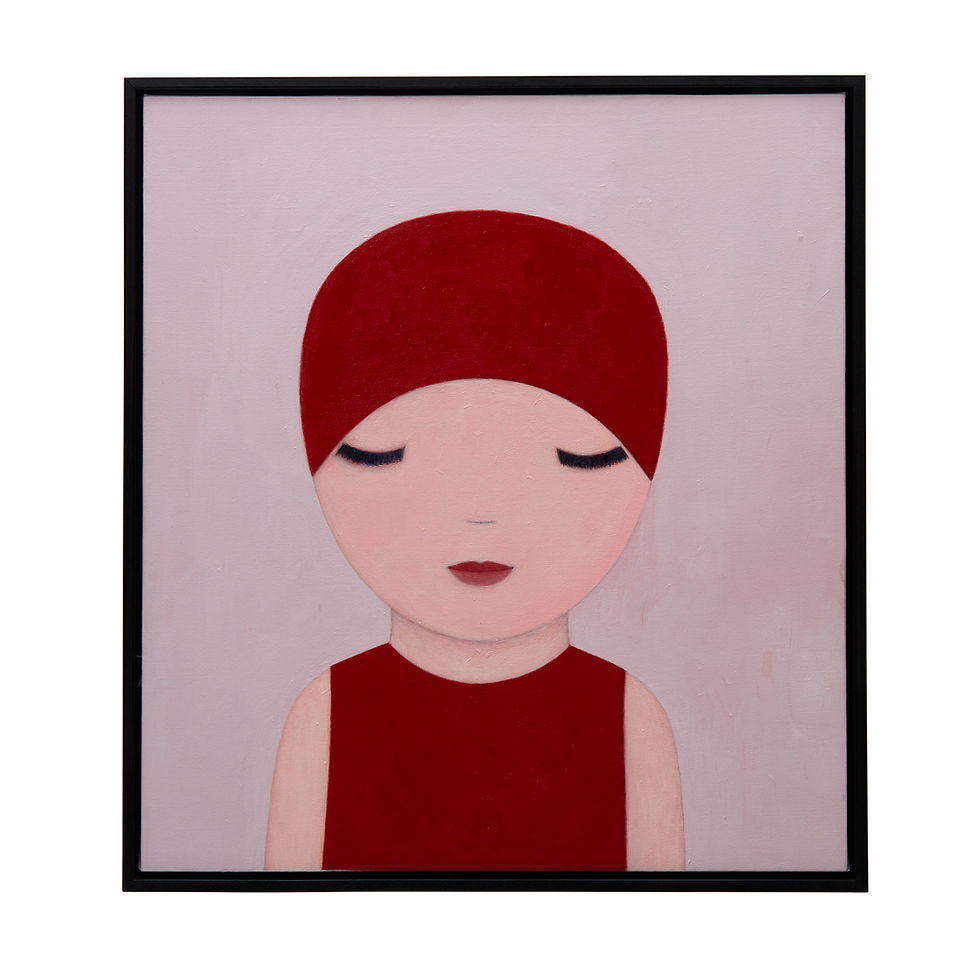
It’s also the case that she considers the concept of remaining true to a kind of pre-color palette, particularly when it comes to painting skin, as a comment on the fact that a lot of people don’t have a specific flesh color. As she admits, similarly to diverting at the rudimentary imprimatura stage, she also never made it to painting the actual flesh color, choosing instead to remain focused on the undertone. It recalls the path to aesthetic ingenuity taken by the experimental composer John Cage, who, after being told by his teacher Arnold Schoenberg that he had no feeling for harmony and would come up against an impassible wall, replied that he would devote his life to beating his head against that wall.
“For all of us there’s something underneath. I continue to explore that too. It’s interesting to take these traditional methods and play around with them in your way. Often, it’s been hard for me to depart from them. When you start saying to yourself, ‘Well, it’s supposed to be like this,’ that’s when you’re supposed to throw it out of the window and say, ‘There’s no supposed to be.’ That’s a very dangerous place. Who says you’re supposed to?” said Wilson, reflecting all of the rebellious qualities of growing up physically, mentally, creatively, drawing from motifs that she points to in her “Little Friends” show. In a narrative interpretation, her exhibitions at Pg chart the path of maturation, from the prenatal and infant development of Swimmers, to the childhood nostalgia of “when we were little” and the years leading up to adolescence in “Little Friends”, which crystallized in her latest show, “Polaris” in 2017.
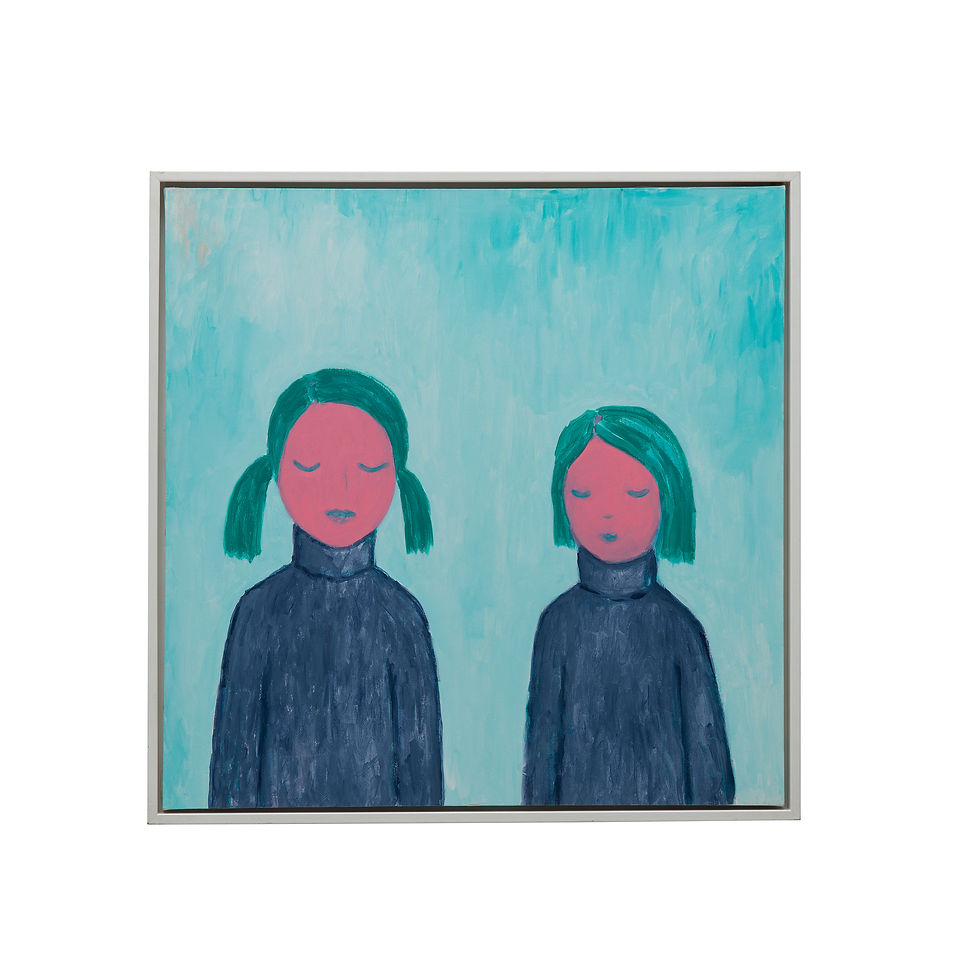
While she consistently paints the female form at the center of her every show, her works aren’t expressly feminist. Her art is personal, as is reiterated, a kind of window through which she reimagines her childhood, reflecting on the experience of becoming a new mother and growing as an artist in the city of Istanbul, where she taps into a trove of foundational memories. Only later does she contemplate how her individual mission might fit into the world. She is a woman, a mother, an artist, a communicator, but when it comes to being a feminist, she sees it as a behemoth topic that only intensifies her admiration for those who place it successfully in their work.
“I can’t go to those marches. I get claustrophobic,” she said, with blunt honesty, though not without a hint of comedy. “I made other contributions. Not that that’s what feminism is all about but lately that’s a manifestation of feminism, women’s marches, and politics. But I think feminism is a great thing to be thinking about for whatever identity you have.”
In between her last two solo shows, Wilson also participated in a group show with Pg, titled “Holistic”, in 2016. She entered a curious painting that in many ways diverged from her concentration on the human form, although the imprimatura is striking for its bleak background resembling an icy blue, and snow white tundra. Her painting centered on the figure of an owlish, penguin-like character.
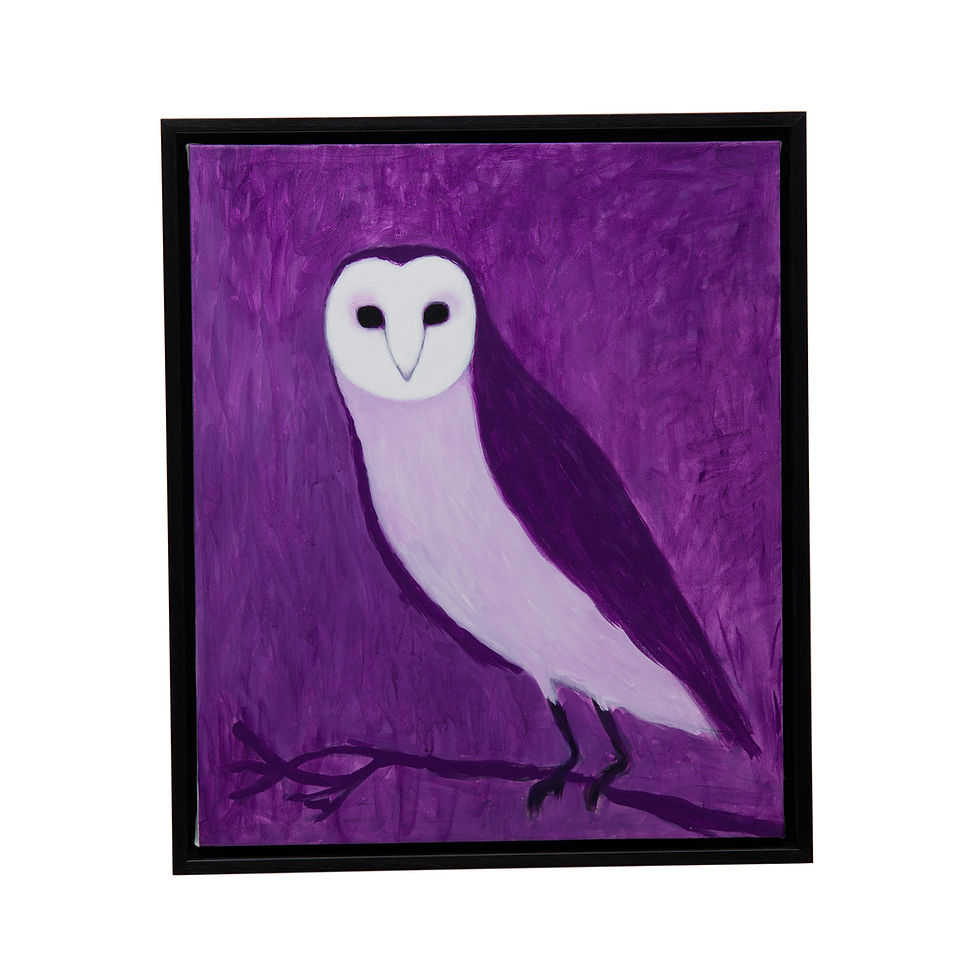
“It’s sort of inspired by the toys I’m seeing in my house over the years. You know when you get a stuffed animal, and you’re like, ‘What is that? Is that a bird, or a dinosaur?’ There’s certain animals that are important to very young children. They’re the animals that stand out when you are learning about life. There are the obvious ones like cats and dogs, but there are really popular ones you always see made into toys like elephants, or giraffes,” she said. “Owls are something that people love, I think for their mythological meanings, like wisdom and mystery. There are some famous poems, like ‘The Owl and the Pussycat’ [by Edward Lear]. The owl is always the figure of knowledge, reason. Here we come back to the whole Apollonian thing.”
She is enamored with the barn owl especially, because to her it looks like a child, with its worried eyes. Full of quirky, bedtime tales, she remembers how when Harry Potter became popular everyone in the UK bought owls, and as soon as mass attention drifted, so did the owls, which were summarily released, causing a stir of unnatural flight in the English countryside. After all she confesses that she did in fact have a childhood interest in owls, an animal that she found to be almost iconic.
Since becoming an artist, she began painting owls, and has repeatedly done so, but not always as paintings to sell. She first wanted to hang them in her house only to see that people liked them, so she continued creating more portraits of the wise, enigmatic bird. One of her larger owl portraits enjoyed wide public appreciation in Istanbul during the group show “Critical Thinking” at the Hisar School Culture Center exhibition curated by Pg in 2017. For the show, she painted the owl exactly as she thought a child would draw it for an art class at school. It was a large piece, about six feet wide, and with a simple concept, relatively unsellable and not exactly purposed for commercial ends. She ended up donating it to the school as she felt it would be a great work for kids to see everyday.
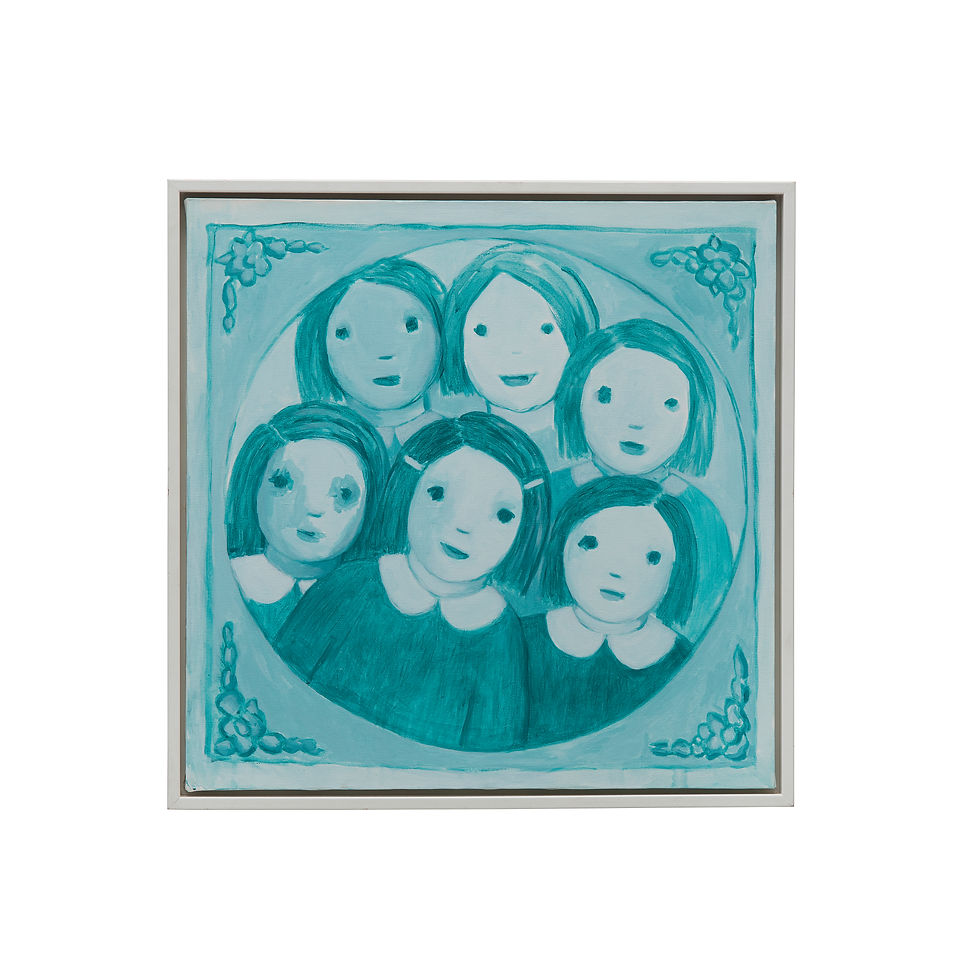
“And then I received the nicest letter from the school, the nicest letter I’ve ever received in my life saying how meaningful it was to have the piece of work, and how the kids were fascinated by it. They hoped that more artists would donate work. I just thought, ‘Thank God, that’s why you make art.’ Find a place for it that’s important,’” said Wilson, proud of her achievement to have a piece permanently exhibited to improve the quality of life for children. “Kids will see that work and it will become part of their environment, and maybe make their day better. Sometimes seeing art can really cheer you up. It was a big achievement for me.”
With her most recent solo exhibition at Pg, titled “Polaris”, the young girl she often paints throughout the years had grown up even more to the extent that she was full of life and action, donning superhero costumes and brushing close with smartphone use. Wilson is aware of the autobiographical contents that her paintings might evoke by any interpretation, but she shies away from making direct reference to nonfiction elements in her works and progressions. Although, admittedly, she says with a laugh, “There’s probably something to that,” as one of her sons was aged parallel in many ways to the age of the child on her canvases in Polaris.
“With that show, I felt like I could care less if no one else likes it. To me as an artist, it looked really well put together,” said Wilson, who has a fine, curatorial eye, as she praised Polaris for the fact that it didn’t just look like something an artist had done haphazardly over the past two years, but it made a unified statement, aesthetically and in its subjects. “It looked really nice. When we were done painting the walls and installing it, I was so proud. I wanted to camp out for two weeks, and never leave. It was gorgeous. I loved it. I think a lot of the paintings sold, but it doesn’t matter. They just did. It was a good show.”

2017 was a difficult year, all the more so for the arts, as people grappled with the unstable political situation in Turkey, and its volatile repercussions. For an American artist, Wilson admired arts institutions like Pg who would march on regardless of the encircling tragedies, because, as she emphasized, “Art does matter.” Polaris was Wilson’s first show in Çukurcuma, where Pg had moved in part to avoid the turbulence on the street that was on the rise in the wake of escalating and often hostile conservatism. Underneath the gallery floor at her new space, PG is in the eye of the storm, where above all, it creates community.
In the midst of socializing in its bubbly depths, Wilson met the Pg artist Hasan Pehlevan, loved his work, and bought one of his pieces, as it was hanging on display. She told him flat out how much she appreciated the work, and he shot back: “Do you want to buy it?” She responded, “You’re not peddling carpets!” She realized the very next day that she did want to buy it, and so cursed him endearingly and made the arrangements.
“I’m trying to get Hasan over here to New York. Pg has a great group of artists, and it has grown. It was a different gallery ten years ago, and she knows that. 25 years ago for sure, because she gets in there, looks at work and responds to what she responds to and follows her heart and all that corny, sentimental stuff, but it works. It’s a gallery to be proud of. I look at the shows and wish I could be there,” said Wilson. “Pg could be in New York. It transcends a Turkish gallery, or an Istanbul gallery. It could be anywhere. And that’s what’s interesting about her artists. It’s nice for anyone to be able to say, ‘I’m an artist, not just a Turkish artist, or not just an American artist, whatever it is, I’m an artist.’ And you can say that about all of her artists. I like that and I think they like that too.”
The Milieu
“I actually had not spent a lot of time in Istanbul in the years leading up to 2007. I had gone quickly for weddings. I was spending a lot of time in London, working there for a while as a designer and other European countries, but not in Istanbul. I started to understand what was going on and how intensely it reminded me of a lot of other, large European cities, where artists connect because it’s a fascinating place,” said Wilson, who has also since begun to work with a new gallery in New York’s Lower East Side district called Geary, founded in 2013. “I’ve had this theme of working with gallerists who are starting galleries, probably because I have never been someone who chases people down to show my work. I’ve never been good at it. I’ve been a little shyer, saying, ‘What do you think? Can we combine our efforts?’”
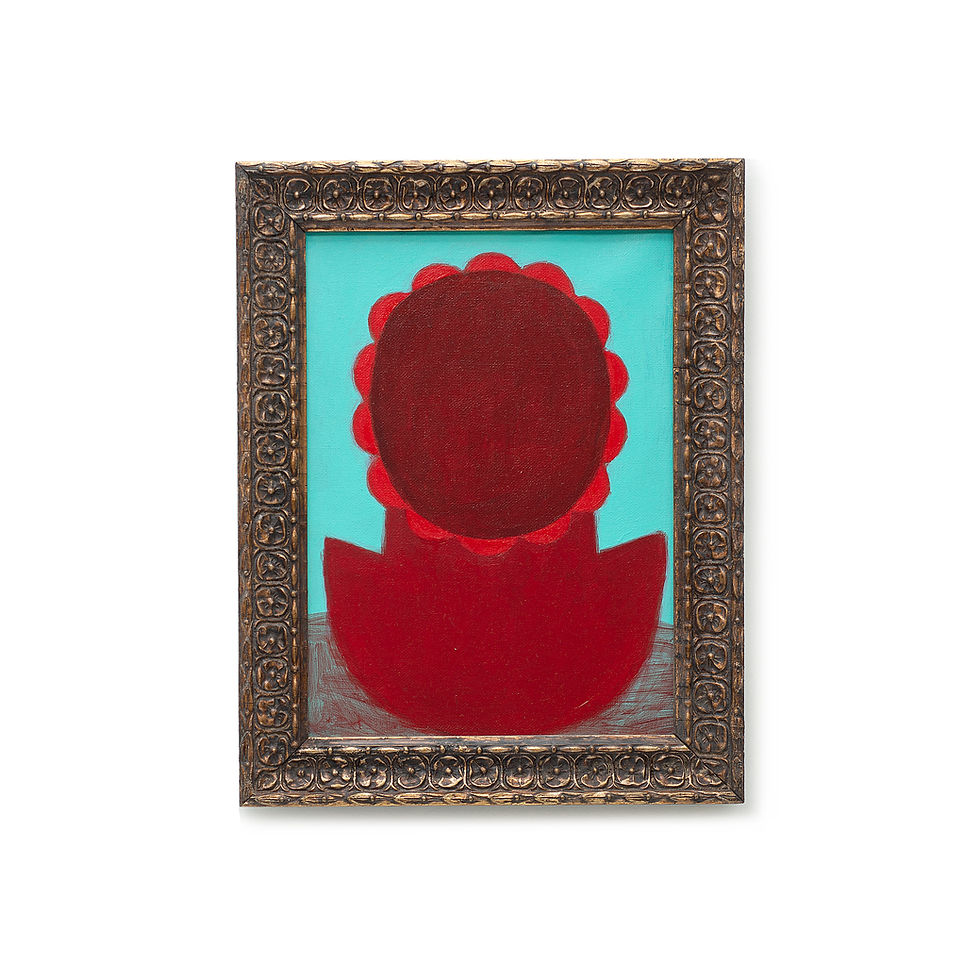
Despite having a relatively broad field of vision as an artist based in New York showing regularly at Pg for over a decade in Istanbul, she insists that, in fact, artists work alone so much. Counter to popular opinion, while artists generally have a large cultural footprint, the work itself largely emerges independent of the greater scene. Artists tend to create in solitude. The studio is typically a very private place, and to make the journey from creation to exhibition, with all of the social exchanges that it demands, is often difficult, even for group shows.
Wilson’s work is thoroughly personal, as is common to artists, but for her, there is a certain shock at play when a painting that she’d spent long hours with alone is suddenly thrust into the buzzing ambiance of a show, where a friendly, drinking crowd is there to have fun and ask questions. “You feel naked, and the work is just there,” she said. “I have it down by now, but it’s a step people have to make. If you’re too young and unready, or your work is not really yours and you’re copying people or something, you just can’t do it. That’s why some ‘make it’ when they’re older, or younger. You have to be able to survive there.”
“Artists spend so much time doing their own work that they’re focused on their own thing, that there is a general awareness and interest in seeing what’s going on, but people always come back home, and New York is so big. There’s so many galleries, museums, so many ways to see art. There’s art in places you don’t even expect to see it,” said Wilson.

“It’s fun to be a part of that, but I can’t help saying that there’s pressure from the commercial side in New York. You feel it just from the excitement of getting a sale. I feel lucky because people respond and whenever I have a show usually we sell. It would be hard if you didn’t. You’d feel like you might not have helped out your gallery because they make an investment in you.”
The reality is that most galleries don’t own their space. As Wilson confesses, it sometimes escapes young artists, like herself when she started out, just how important commerce is in maintaining the creative infrastructure of a city, or its particular aesthetic and conceptual milieus. There are costs that people involved in certain aspects of an arts show simply don’t think about, including the artist, especially in the realm of advertising and presentation. When a buyer walks in willing to pay often a lot of money for a piece of art, the effect on everyone on the side of the gallery is vital.
“It’s become a luxury, to buy an artwork. I do feel that New York has an emphasis on having a great show as being measured by selling work. Of course, it’s also about interesting people viewing it and talking about it. That’s the curatorial, intellectual side, but it always comes back to if you’re helping the gallery achieve their goals,” said Wilson, who recently enjoyed selling one of her paintings seven years after its exhibition. “You have to find your group in New York, not that Istanbul isn’t like that, but the art world is comparatively smaller. New York is the biggest art city these days. Now everyone’s moving to LA. It’s so established in New York. The galleries are full.”

As a more seasoned artist, Wilson appreciates seeing younger artists that she follows make a great show, even if it’s not in New York. At this point, it doesn’t matter, because the melting pot is overflowing. In terms of Wilson’s career, it has meant that she, in turn, has chosen to work with a new gallery. The address books of the established galleries are practically overwritten with all of the names they need to be sustainable. Handling such skyscraping overheads, new names pose a greater risk than anyone is willing to take at that level.
“There are different spheres of confidence that you have in your life. You have the confidence to get up in the morning. You have the confidence to say, ‘I’m going to finish this work I’m doing.’ You have the confidence to know that it’s worthwhile,” said Wilson. “And then you have to have the confidence to share it. That’s hard as an artist, sharing your work with anyone, not just somebody who’s going to put it up in their gallery and show it to the world. You have to arrive at that stage.”
Sibel Tomruk is an art writer in Mersin, Turkey


Comments